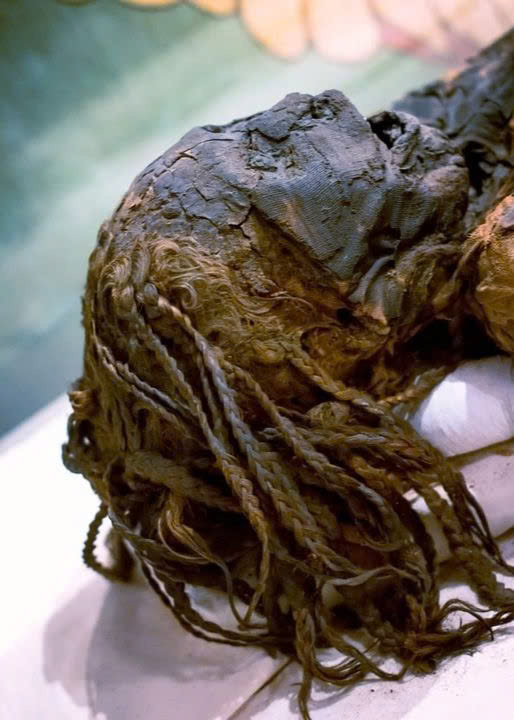Discovery Reveals Insights into Non-Royal Burial Practices
In a remarkable find from Egypt’s New Kingdom period (circa 1550–1069 B.C.), archaeologists have unearthed the mummy of a young woman whose remains shed light on how non-royal Egyptians prepared for the afterlife. While royal tombs and pharaohs’ mummies often dominate our understanding of ancient Egypt, this discovery offers a rare look into the funerary traditions of ordinary citizens — those who lived beyond the walls of temples and palaces.
Unlike the grand, gilded sarcophagi of kings and queens, this woman’s burial was modest. Yet the care evident in her preservation speaks volumes about the universal importance Egyptians placed on the journey beyond death.
The Woman Behind the Wrappings
Modern scanning technology has revealed striking details about the woman beneath the linen. She was likely in her mid-20s at the time of death, standing approximately 4 feet 10 inches tall — shorter than the average height of her contemporaries. Scans also revealed a slight spinal curvature, a subtle reminder of the everyday physical strains endured by ancient Egyptians in their working lives.

What astonished researchers most, however, was the condition of her internal organs. While royal embalmers often removed the liver, lungs, stomach, and intestines to preserve them separately, this woman’s liver and spleen were left intact, and remarkably, traces of brain tissue survived — a rarity in Egyptian mummies, where the brain was typically extracted.
“This discovery helps bridge the gap between the known royal practices and what we can now confirm was a more accessible version of mummification for the broader population,” noted Dr. Leila Hassan, an Egyptologist specializing in New Kingdom funerary traditions.
A Tale of Status and Belief
The simpler nature of the mummification process reflects the woman’s non-elite social status. Her body was likely treated with natural resins and natron salts, wrapped carefully but without the lavish trappings of nobility. There were no gilded amulets or golden masks — just care, precision, and faith in eternal life.

Yet this simplicity does not diminish the significance of her burial. In ancient Egyptian belief, every soul, regardless of rank, required preservation to ensure safe passage into the afterlife. Her careful wrapping and attention to detail reveal that even those of modest means participated in deeply spiritual rituals surrounding death.
From Ancient Sands to Modern Study
Today, the mummy resides at the Museum of Treasures in Wichita, Kansas, where it continues to draw both curiosity and reverence. Researchers have used non-invasive imaging and forensic analysis to study the remains without disturbing the wrappings, uncovering insights into ancient health, diet, and social life.
The scans show that despite her non-royal origins, the embalmers possessed a surprising degree of technical skill. The preservation of her internal organs and brain tissue suggests either regional variation in technique or evolving methods of mummification over time.
“This mummy reminds us that mummification was not just a privilege of kings — it was a reflection of an entire culture’s devotion to eternity,” said Dr. Hassan.
A Window into Everyday Ancient Egypt

While royal mummies capture the grandeur of Egyptian civilization, discoveries like this young woman’s provide a more personal and human connection to the past. Through her, we see the realities of ordinary life — shorter stature, physical ailments, modest means — paired with the same profound hope for immortality that defined one of the world’s greatest civilizations.
Her body, carefully preserved for more than three thousand years, continues to tell a story of devotion, resilience, and humanity. In her silent repose, she reminds us that ancient Egypt’s legacy was not built solely by its pharaohs, but also by its people — those who lived, worked, and dreamed under the same eternal sun.
Sources
- Smithsonian Magazine – Non-Royal Egyptian Mummies Revealed Through Modern Scans
- National Geographic – Everyday Life and Death in Ancient Egypt
- The Guardian – New Discoveries in Egyptian Burial Practices
- BBC History – The Science of Mummification
- Museum of Treasures, Wichita – Egyptian Collection Archive
